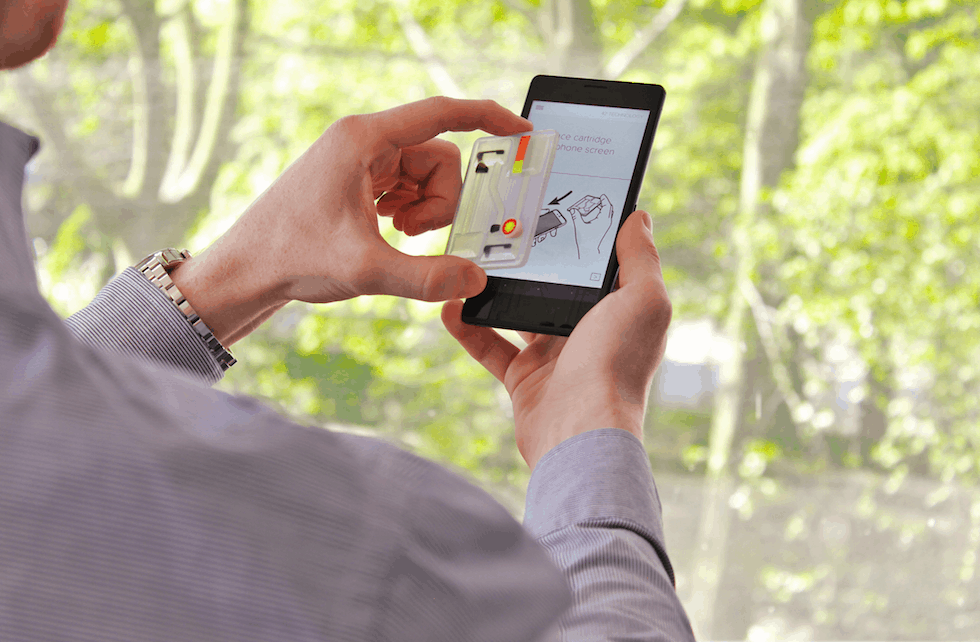
42 Technology’s invi concept – an app that works in tandem with a smartphone or tablet’s accelerometer, touchscreen, camera or location details – could allow diagnostics companies to develop a new generation of accurate, repeatable ‘point of care’ (POC) tests without the expense of dedicated reading equipment.
The company - based in Cambridge, UK, adds that invi could also give patients, communities and their healthcare providers easier access to existing tests that previously may have been too costly for routine or widespread use because they needed an expensive customised reader.
“Most industry experts who have seen the inVi demonstrator picked up that it could be a key tool in epidemic tracking, where the tests could be of a lower fidelity but still prove useful,” added Andrew Chapman, head of 42 Technology’s healthcare business via email. “Especially if they were correlated with - for example - location data from the smartphone. An example question that inVi could address was “What about the next H1N1 or Zika virus? How would we test a population en masse?”
42 Technology envisage scenarios where the smartphone touchscreen detects when a user has successfully positioned a test cartridge, or actuated valves or pumping elements within the cartridge; or using the phone’s accelerometer to verify that the user has performed adequate shaking to mix the reagent.
In similar, existing systems, a diagnostic test cartridge contains the necessary reagents alongside elements that can be activated by and/or interact with the reading instrument, such as plungers that act on physical elements within the cartridge.
Although sharing a similar architecture, inVi requires the user to provide the actuation, with their smartphone instructing and verifying steps as they happen.
In use, the user adds a sample, positions the transparent cartridge on the touchscreen after which the smartphone app confirms the correct positioning and starts the test. The app then prompts the user to carry out actions, illuminating different regions of the screen as required, and provides feedback to confirm the successful completion of each step.
When the test is complete the smartphone ‘reads’ the result depending on the end-point of the specific assay: in some cases the camera will be used to detect and compare colour changes. In others an element within the cartridge will measure an electrochemical change and transfer the result wirelessly to the smartphone.
Chapman added that inVi is being designed to work with a relatively low-resolution camera although the more important aspect is the camera’s ability to be calibrated and to recognise colours.
EvaluateMedTech estimates the total worldwide market for IVD devices to be worth around $50bn per year, and is predicted to grow to $67bn by 2020.
The consultancy is now looking for commercial partners to help develop technology and to bring the first inVi diagnostics to market.




Red Bull makes hydrogen fuel cell play with AVL
Formula 1 is an anachronistic anomaly where its only cutting edge is in engine development. The rules prohibit any real innovation and there would be...